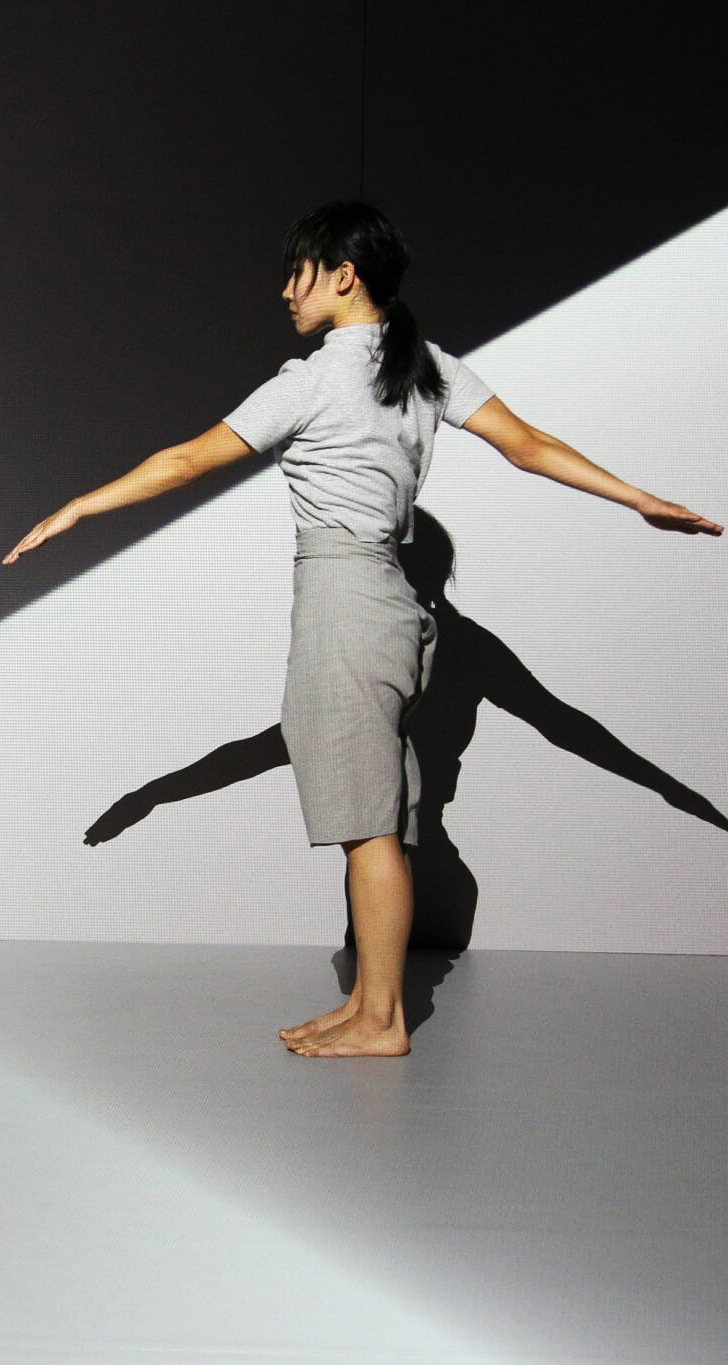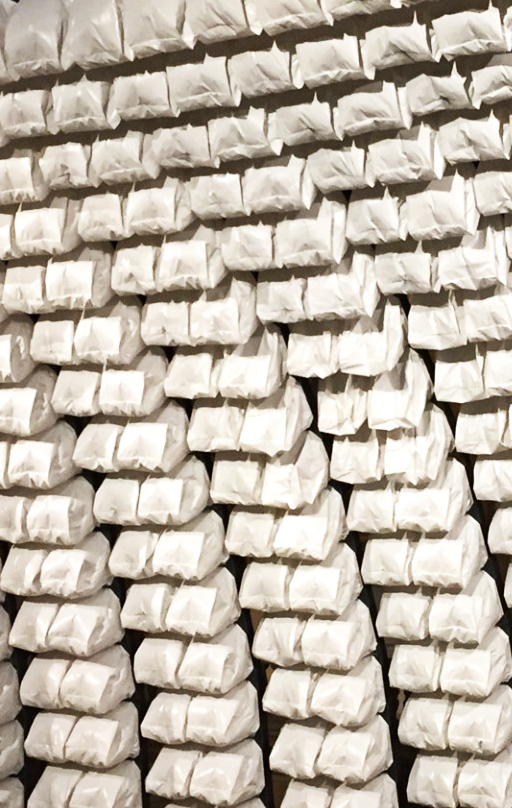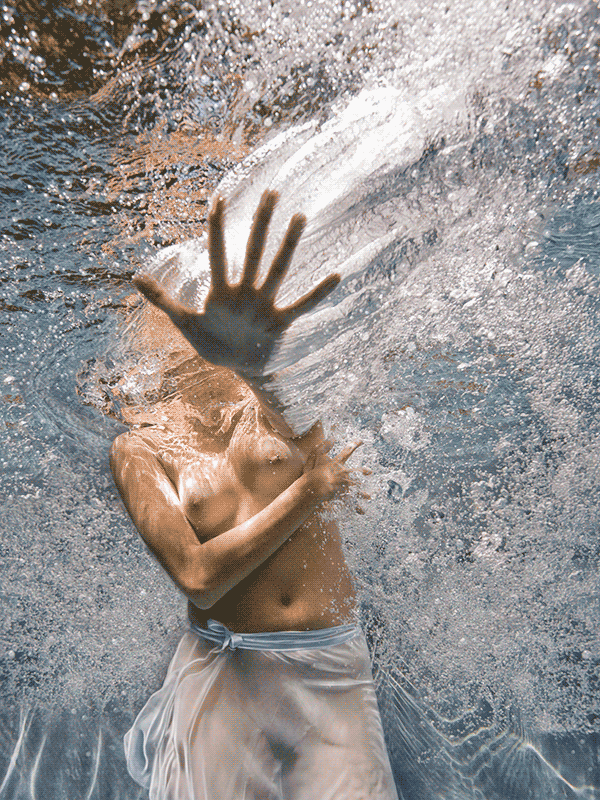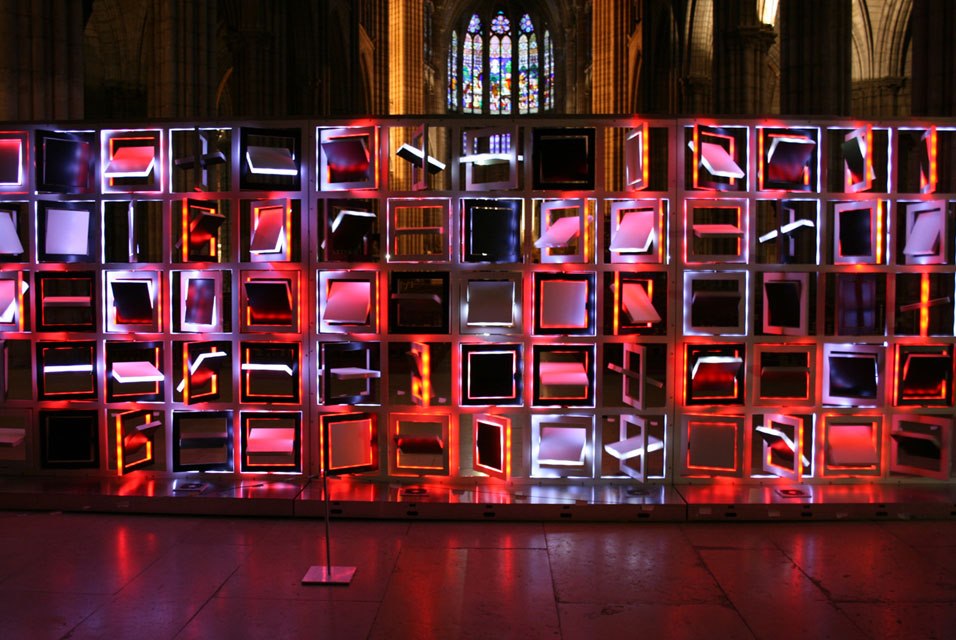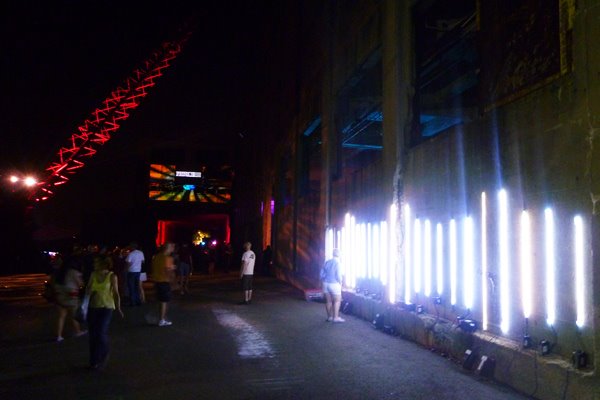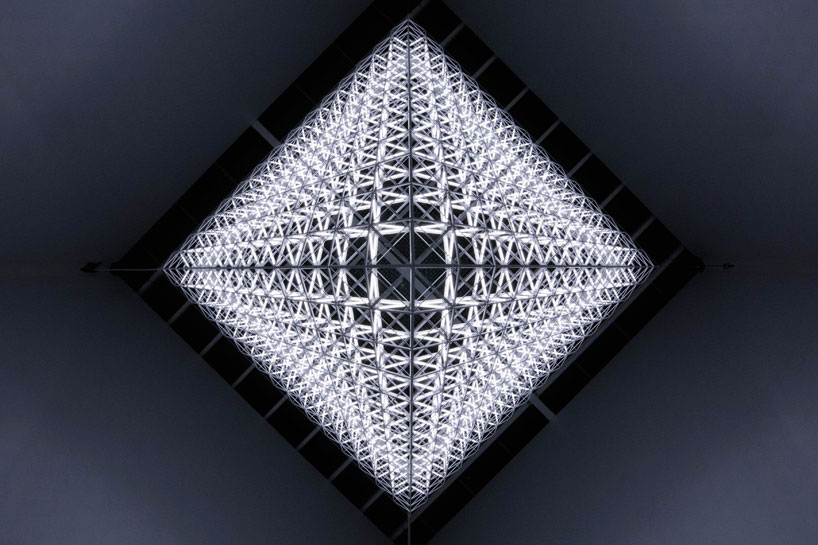
Alex Ekman
COW
Ekman talents extend to the lighting and stage design and his eye for structuring an environment is unerring. There is no set as such, excepting the plaster cow which dangles overhead, but the stage surface has its share of movement as little island-blocks rise up and pits sink down. The extreme tilting of the stage at one point causes unfortunate Bauch to roll, cow-like, almost into the pit. COW has its iconic Ekman moment in the scene that opens on a stage full of swirling dancers in white skirts set in a magical silvery mist. Mikael Karlsson, whose music partners the piece provides a subtle and evocative soundscape. He offers a hint of percussive rhythm picked up by the dancers who launch into an ecstatic dance: a stage full of whirling dervishes, until they collapse exhausted.
.
Ekmans Talente erstrecken sich auf die Beleuchtung und das Bühnenbild, und sein Auge für die Strukturierung einer Umgebung ist unfehlbar. Es gibt kein Set als solches, außer der Gipskuh, die über ihnen baumelt, aber die Bühnenoberfläche hat ihren Anteil an Bewegung, wenn kleine Inselblöcke aufsteigen und Gruben sinken. Das extreme Kippen der Bühne an einer Stelle führt dazu, dass der unglückliche Bauch kuhartig fast in die Grube rollt. COW hat seinen legendären Ekman-Moment in der Szene, die auf einer Bühne voller wirbelnder Tänzer in weißen Röcken in einem magischen silbernen Nebel beginnt. Mikael Karlsson, dessen Musikpartner das Stück ist, bietet eine subtile und eindrucksvolle Klanglandschaft. Er bietet einen Hauch von perkussivem Rhythmus, der von den Tänzern aufgenommen wurde, die einen ekstatischen Tanz beginnen: eine Bühne voller wirbelnder Derwische, bis sie erschöpft zusammenbrechen.



